Key takeaways:
- E-commerce is increasingly focused on personalized shopping experiences, sustainability, and mobile optimization to enhance customer loyalty and engagement.
- Web development plays a critical role in user experience, with emphasis on site speed, responsive design, and engaging UI/UX features impacting conversion rates.
- Emerging trends, such as social commerce, adaptable payment options, and AI integration, are shaping the future of e-commerce and web development services.
- Effective communication regarding shipping, returns, and personalized experiences can significantly build customer trust and satisfaction.
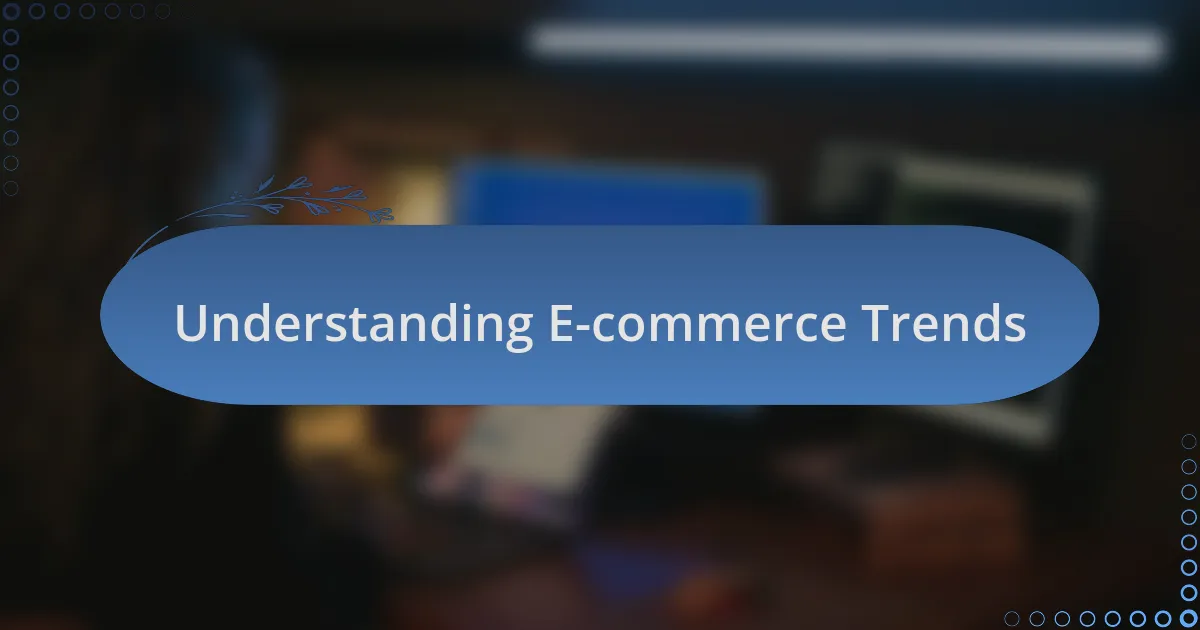
Understanding E-commerce Trends
E-commerce is evolving at an unprecedented pace, and understanding these trends is essential for anyone looking to thrive in the online marketplace. I remember when mobile shopping first gained traction; I was amazed at how quickly consumers adapted to buying on their phones. Have we really grasped just how integral our smartphones have become in shaping shopping behaviors?
One key trend I’m noticing is the increasing importance of personalized shopping experiences. I once visited an online store that suggested products based on my past purchases, and it felt almost as if the store understood my preferences. This tailored approach not only captures attention but builds loyalty—are businesses leveraging this capability to its fullest potential?
Sustainability is another vital trend that is reshaping e-commerce. I often reflect on how consumers today are more eco-conscious than ever. When I see brands prioritizing sustainable sourcing and ethical production methods, it reminds me of our collective power to drive change. Isn’t it fascinating how consumer values can influence market practices?
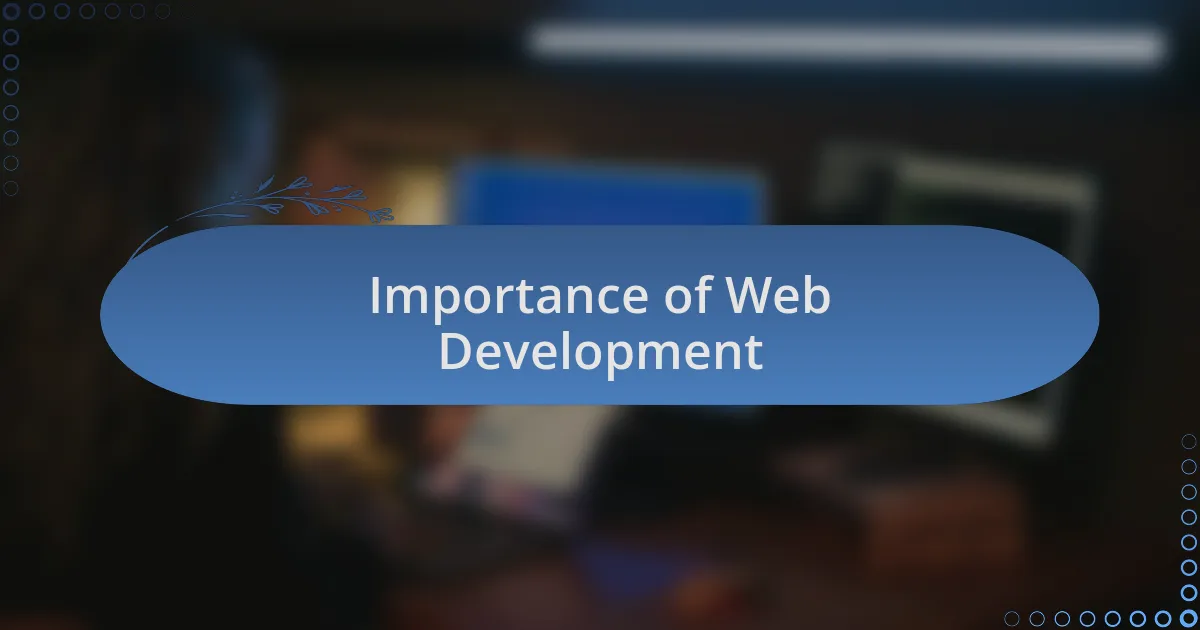
Importance of Web Development
Web development is the backbone of any effective e-commerce platform. I recall a time when I visited a beautifully designed website, but as soon as I clicked through the pages, the slow loading times left me frustrated. This experience reinforced my belief: a well-developed web infrastructure not only enhances user experience but also directly impacts conversion rates. Have you ever wondered how much more you could accomplish if your website was optimized for speed and responsiveness?
Moreover, the importance of web development transcends mere aesthetics; it establishes credibility and trust with potential customers. A poorly designed site can raise red flags for shoppers, and I’ve been in situations where I hesitated to make a purchase simply because the site didn’t look professional. Trust isn’t just a feel-good factor; it’s crucial in today’s competitive landscape. How can businesses ensure they present themselves as reliable and trustworthy to their audience?
Lastly, web development facilitates scalability and functionality that are vital for long-term success. I’ve seen businesses struggle when their websites couldn’t handle increased traffic during peak seasons. Efficient web development empowers e-commerce sites to adapt to changing demands seamlessly. Isn’t it essential for brands to anticipate growth and invest in technology that can keep pace with their ambitions?
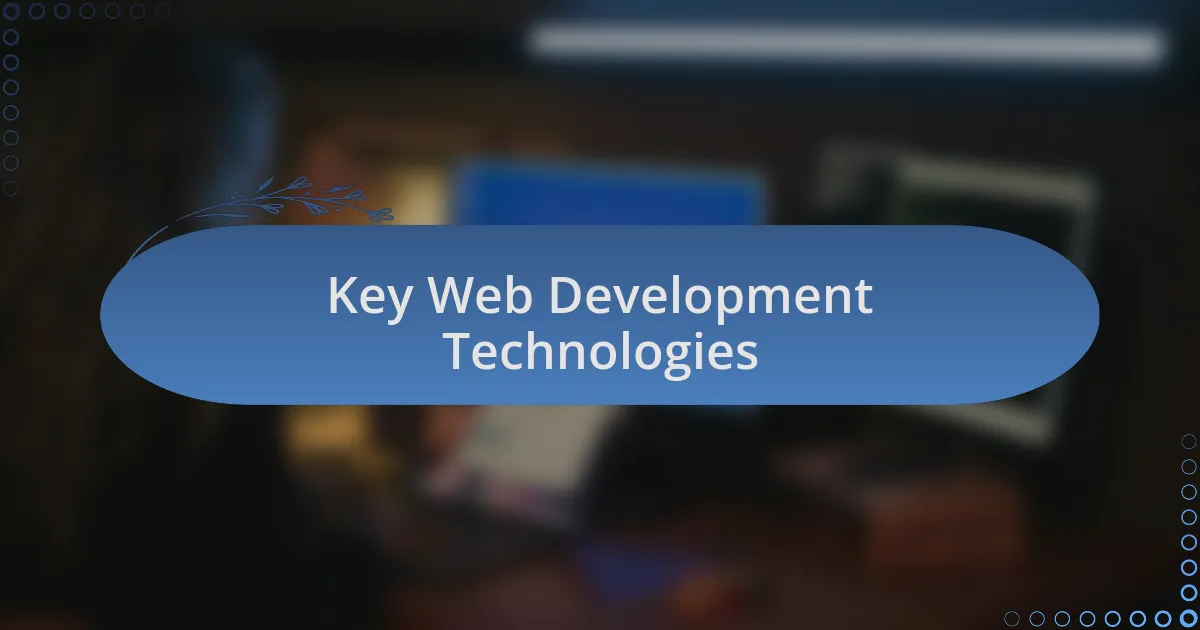
Key Web Development Technologies
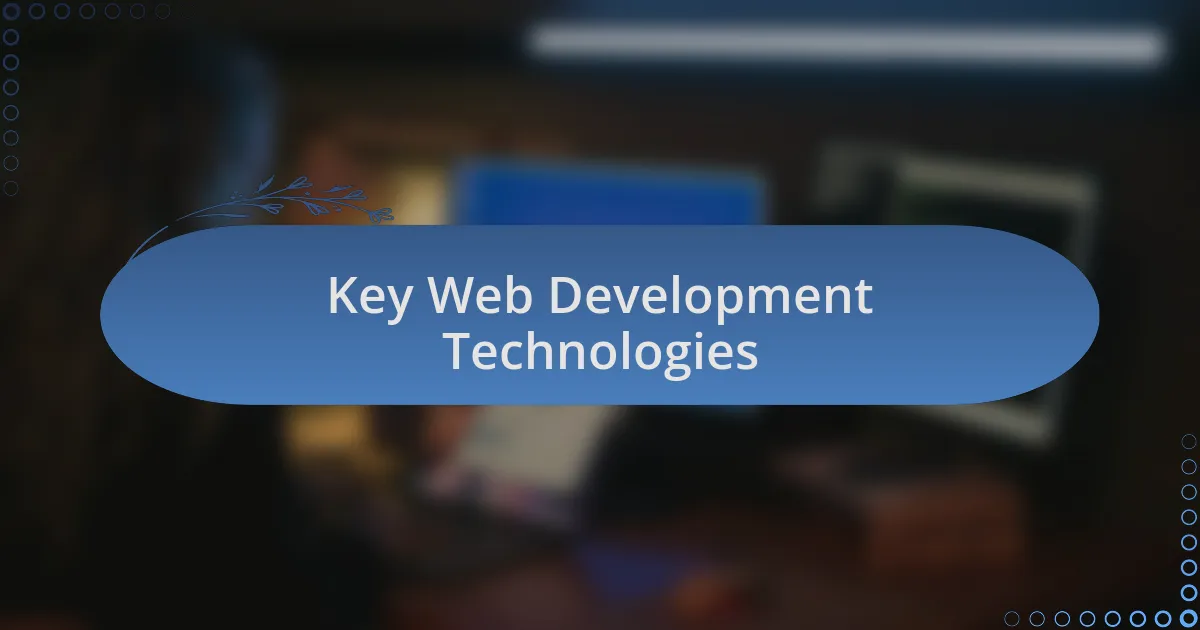
Key Web Development Technologies
At the heart of modern web development are programming languages like HTML, CSS, and JavaScript. I still remember the first time I crafted a simple web page using these technologies; it felt like opening a door to endless possibilities. It’s incredible how these foundational tools can transform a blank canvas into a vibrant online store, capturing the essence of a brand’s personality and engaging users effectively. Have you ever thought about the impact of JavaScript in creating interactive elements on a website, like dropdown menus or dynamic product displays?
Another critical player in this arena is the use of responsive design frameworks, such as Bootstrap or Foundation. I often marvel at how much time and effort these frameworks save developers, allowing them to create visually appealing sites that work seamlessly across devices. When I visit a responsive site, the joy of smooth navigation and clear visuals really stands out. Isn’t it impressive how a responsive design can enhance user experience and potentially lead to a higher rate of customer satisfaction?
Looking at backend technologies, I’ve observed how platforms like Node.js and Ruby on Rails enable rapid application development and robust performance. A few years ago, I worked on a project where using Node.js allowed us to build a fast and scalable web application that handled thousands of requests efficiently. Isn’t it fascinating how choosing the right backend technology can work wonders for an e-commerce site? This choice not only streamlines operations but also significantly affects user engagement and retention, turning casual browsers into loyal customers.
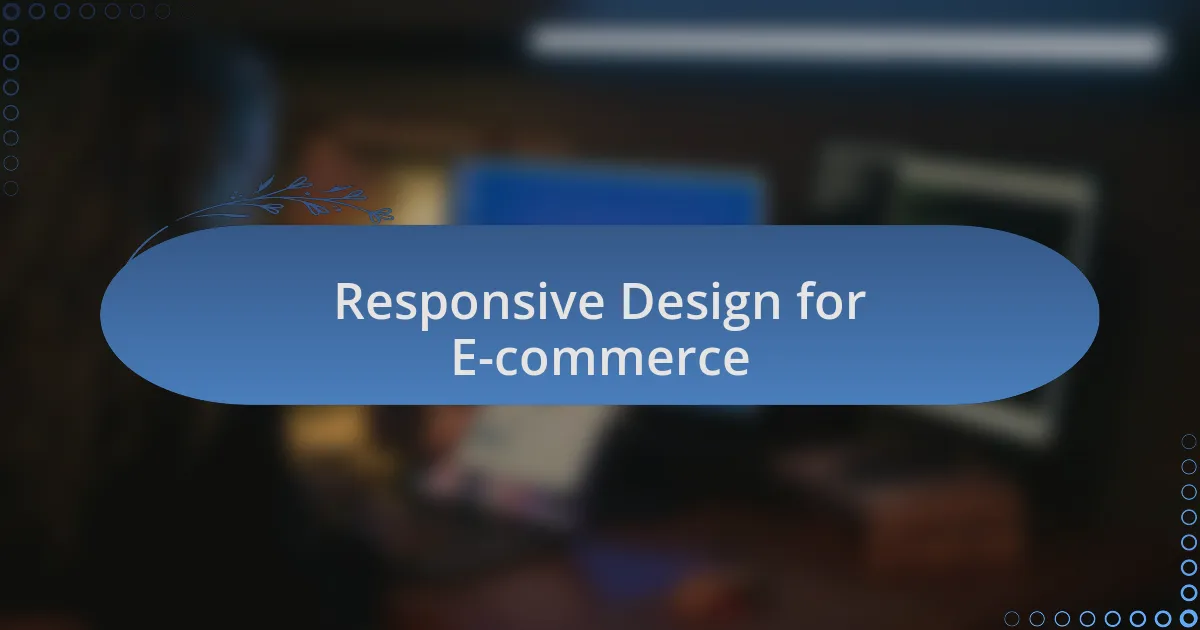
Responsive Design for E-commerce
Responsive design is truly a game changer for e-commerce. I remember redesigning an online store just after the rise of mobile shopping. We prioritized a responsive layout, and the results were immediate: customers could seamlessly browse and purchase from their phones without frustration. Have you experienced a site where pinch-zooming was necessary? It’s not a pleasant experience, and it can lead to cart abandonment faster than you might think.
The beauty of responsive design lies in its adaptability. I once struggled with a client whose website looked great on desktops but turned into a cluttered mess on tablets. By implementing a responsive framework, we transformed their site to fit any screen. I was amazed at how simple adjustments to images and navigation menus made a world of difference in user engagement. Isn’t it refreshing to see how responsive design can breathe new life into a struggling online shop?
It’s important to remember that enhancing user experience is not just about aesthetics; it directly impacts conversions. I’ve had clients who reported significant increases in sales after adopting a responsive design. It’s thrilling to see this kind of transformation—everyone wants their hard work to pay off. Don’t you agree that if customers can easily browse and purchase from any device, they are more likely to return?
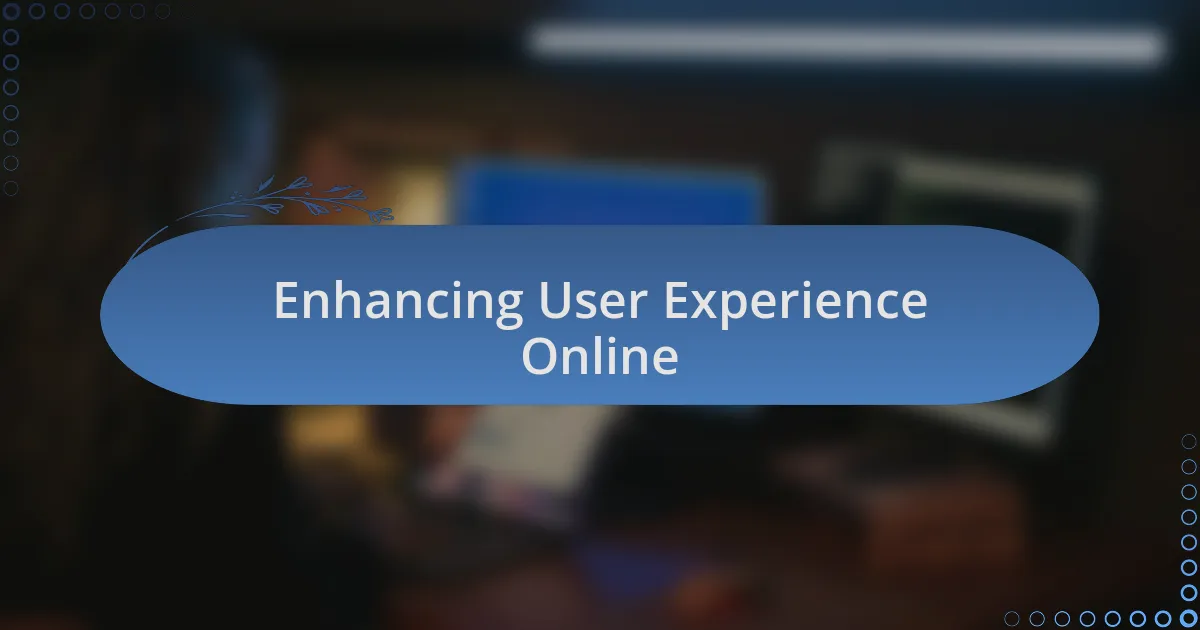
Enhancing User Experience Online
The way users interact with a website can make or break their experience. I recall a project where we revamped an e-commerce site with better navigation features. Instantly, the feedback was positive; customers were no longer getting lost in a maze of products. Have you ever left a site simply because you couldn’t find what you were looking for? It’s frustrating, and improving navigation significantly enhances user experience.
Another critical element is site speed. I once worked with an online retailer whose site took too long to load, resulting in high bounce rates. After optimizing images and reworking some backend processes, we saw load times drop to under three seconds. The joy in the client’s voice when they noticed an increase in traffic was priceless. Isn’t it incredible how something as simple as speed can profoundly influence a visitor’s perception and willingness to purchase?
Finally, personalized experiences can truly enhance online interactions. I’ve seen remarkable results when implementing personalized product recommendations based on browsing history. It feels more like a tailored shopping experience than a mere transaction. How inviting is it when a site seemingly knows your preferences? This personal touch can make customers feel valued and increase their loyalty over time.
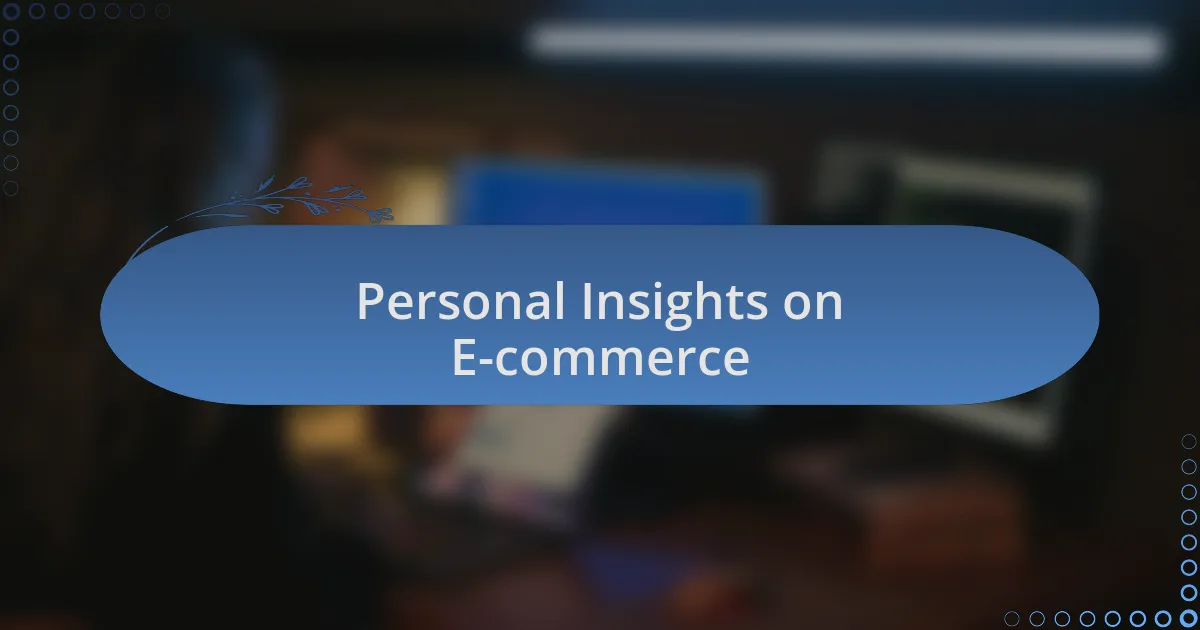
Personal Insights on E-commerce
I’ve noticed that social commerce is on the rise and it’s something I’ve always found intriguing. I remember working on a campaign for a fashion retailer that heavily leveraged Instagram shopping features. The excitement in the team was palpable when we saw sales spike as customers could purchase directly through the app. Have you ever just clicked on a product in a post and purchased it right there? It makes shopping feel effortless and spontaneous, blending social media with e-commerce in a fascinating way.
Another insight I gather is the importance of clear communication regarding shipping and returns. In one project for a small electronics store, we added a dedicated section for shipping details and an easy-to-understand return policy. The immediate response was heartening; customers expressed a sense of security knowing what to expect. Isn’t it reassuring to shop when you feel confident about what happens after you hit ‘buy’? This transparency not only builds trust but also cultivates lasting relationships with customers.
From my experience, adaptable payment options have transformed the e-commerce landscape. I once collaborated with a niche pet supplies store that introduced various payment solutions. The excitement on the team’s faces when they reported a significant increase in conversions was unforgettable. Have you ever hesitated at checkout because your preferred payment method wasn’t available? The ability to offer diverse payment options not only eases the purchasing process but significantly enhances customer satisfaction and retention.
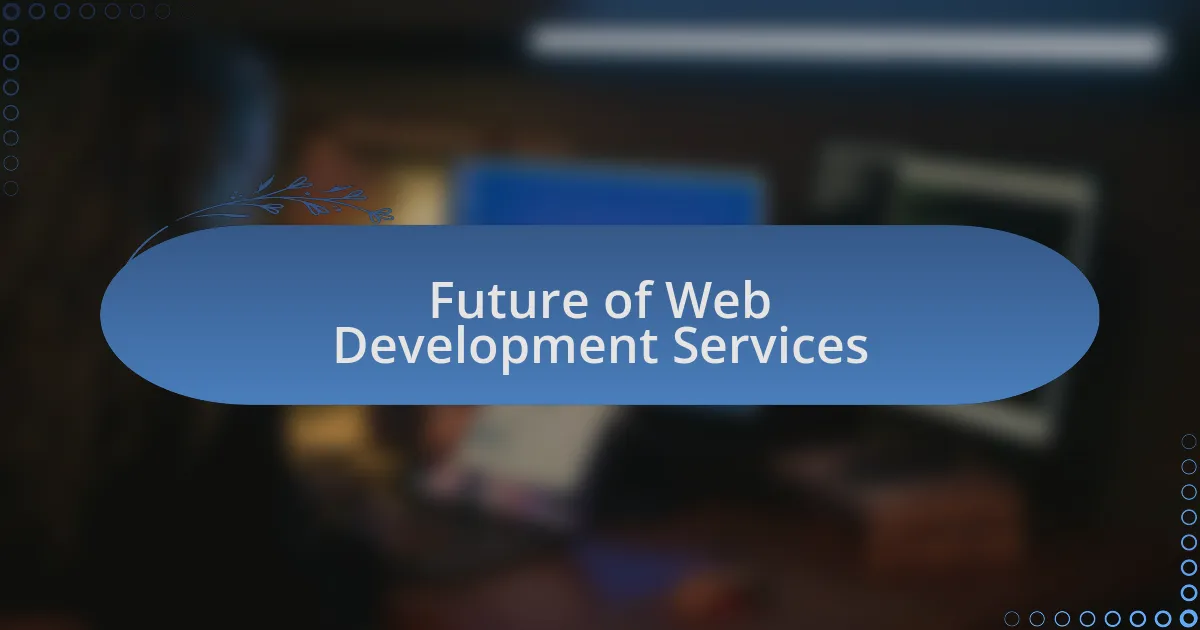
Future of Web Development Services
As I look ahead, it’s clear that the integration of artificial intelligence in web development services will play a pivotal role. I had a chance to work on a project where we implemented chatbots for customer service, and the transformation was remarkable. Customers loved the quick responses and 24/7 support, creating a smoother experience. Have you ever chatted with a bot that just got you? It’s that seamless interaction that makes AI such a game-changer for web platforms moving forward.
Another trend that stands out is the emphasis on mobile-first design. A few months back, I partnered with a local bakery to revamp their website with mobile optimization at the core. The change brought in a wave of new customers, many sharing how they found it easy to order from their phones while on the go. Isn’t it fascinating how we so often reach for our phones, craving immediate access to services? Prioritizing mobile experiences is no longer just an option; it’s a necessity for growth in web development.
Moreover, the future will likely see a shift towards more immersive technologies, like augmented reality (AR). While working on a virtual showroom for a furniture company, I witnessed firsthand how AR transformed the buying journey. Customers were thrilled to visualize how a piece would look in their own homes before making a purchase. Have you ever imagined how that could change your shopping habits? The incorporation of such technologies not only keeps users engaged but also creates an enriching and interactive experience.